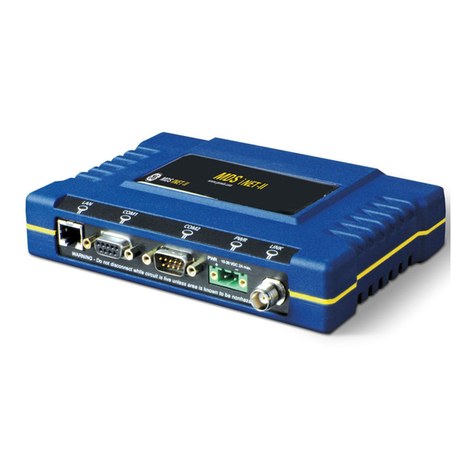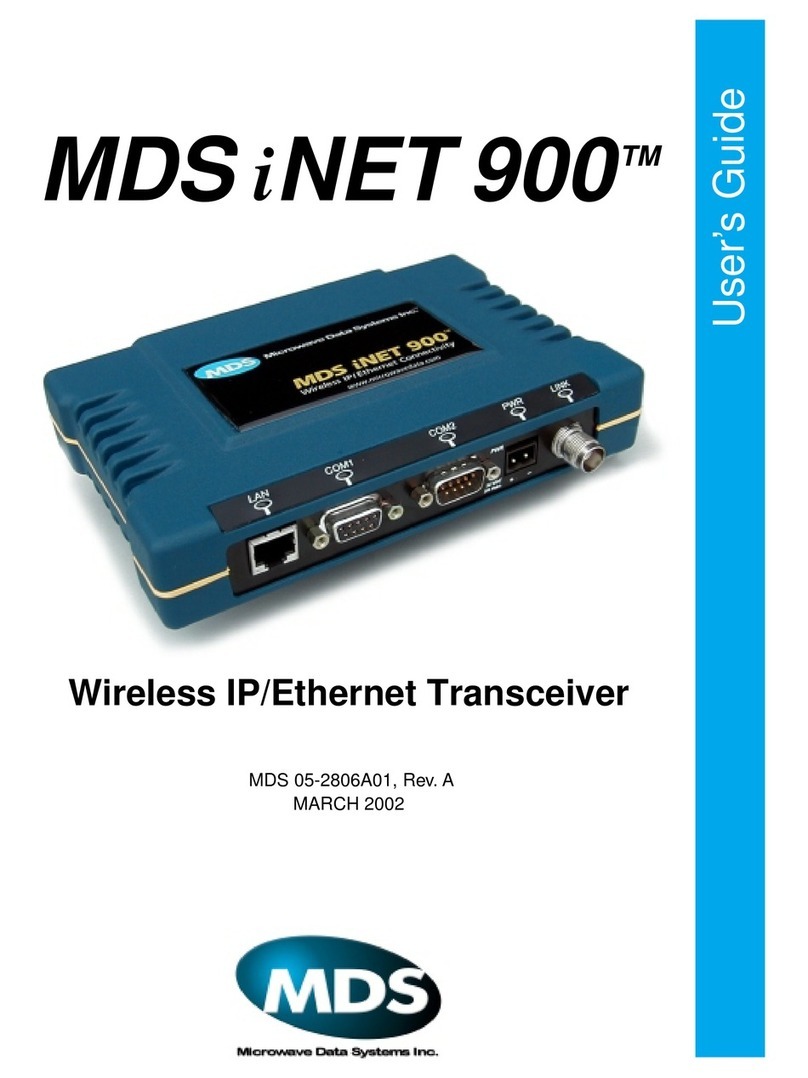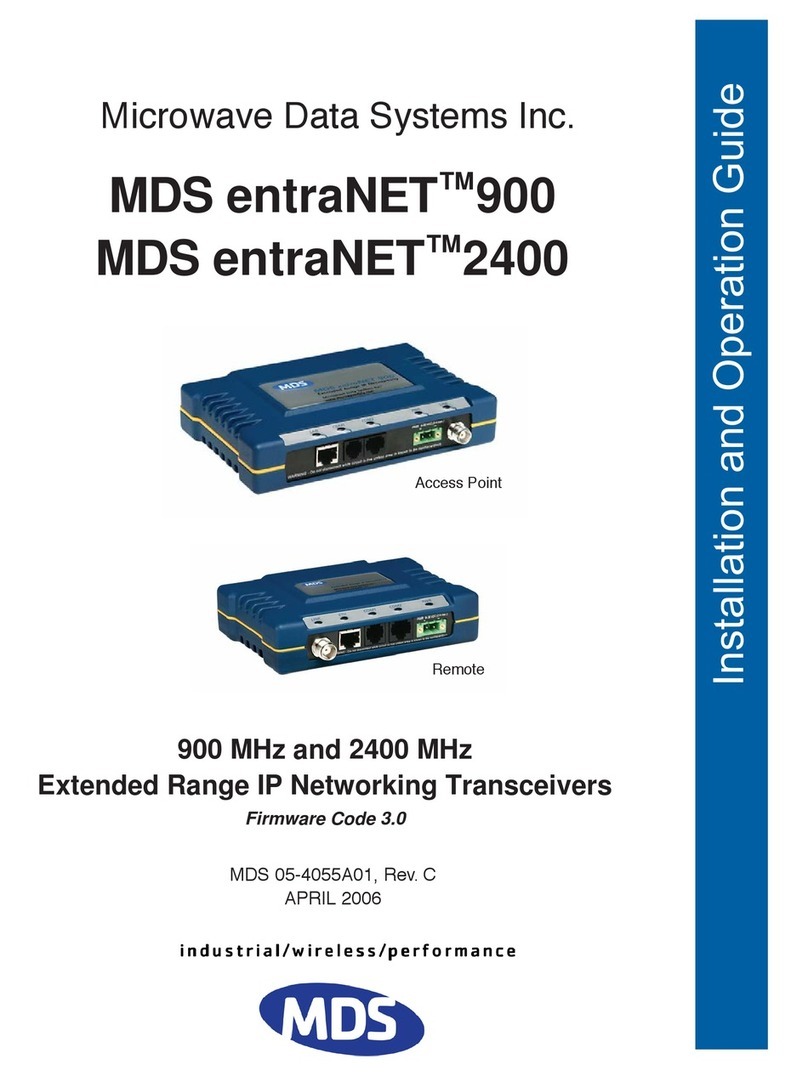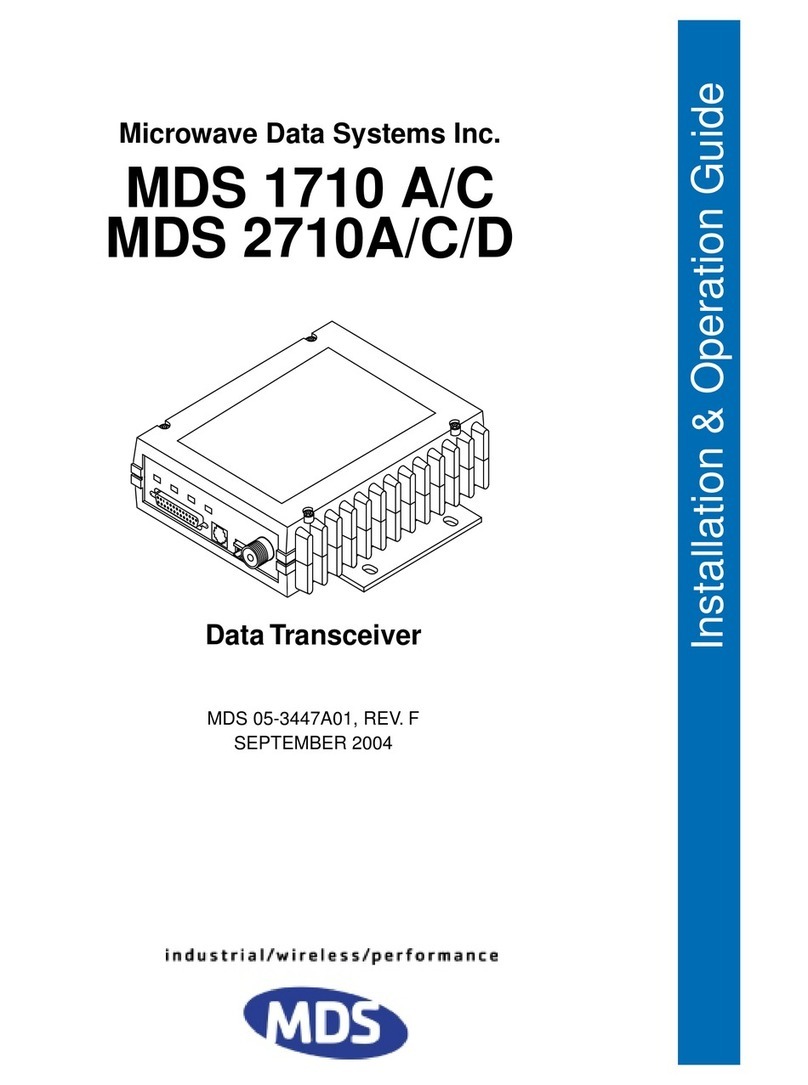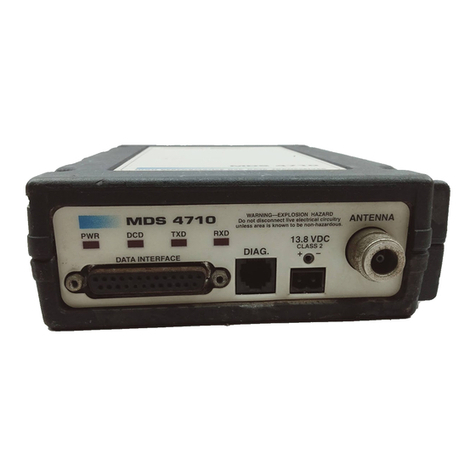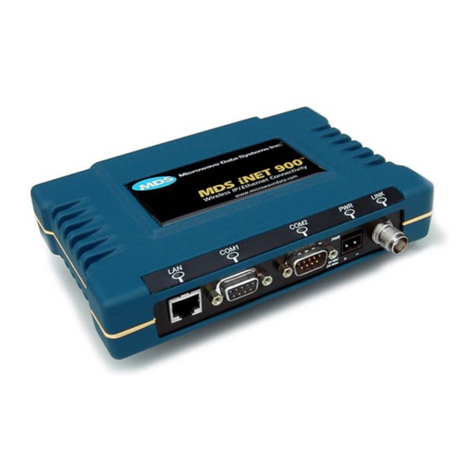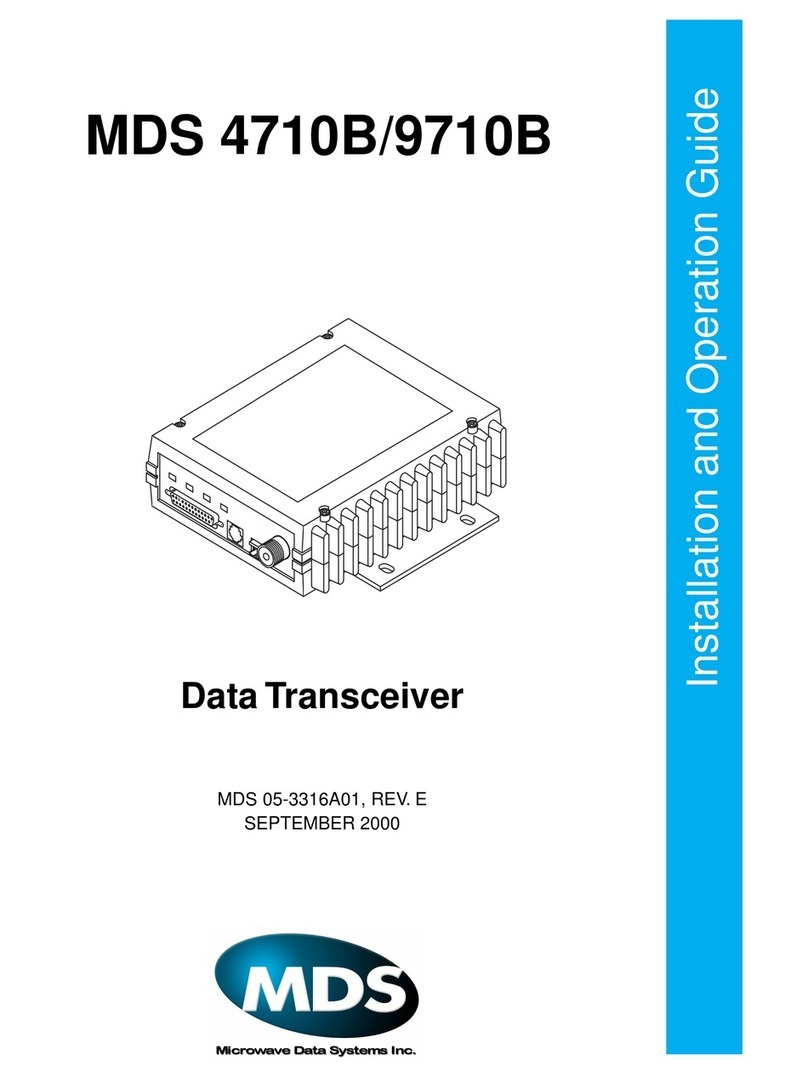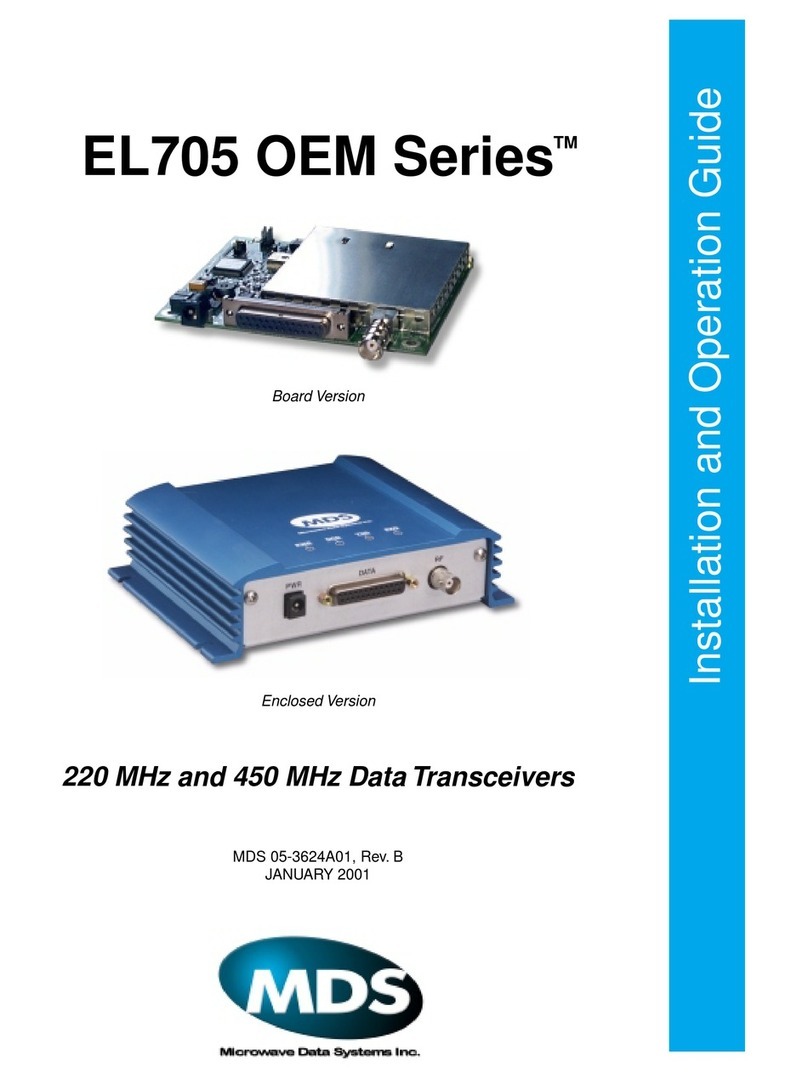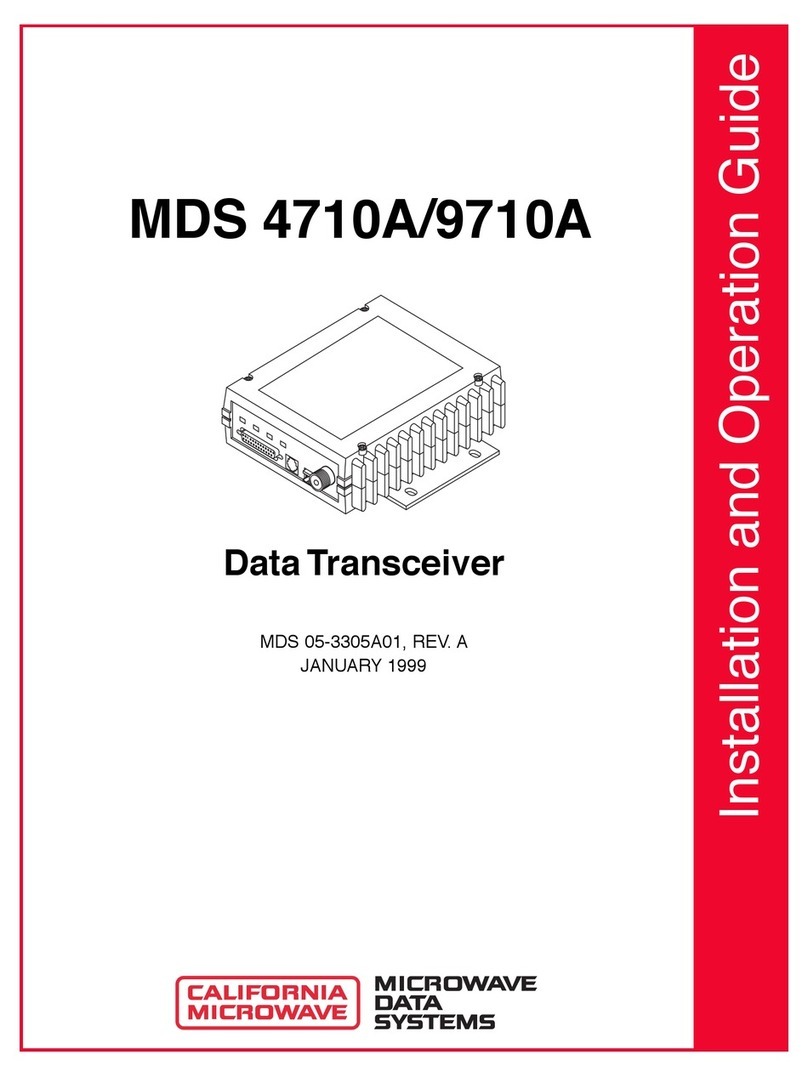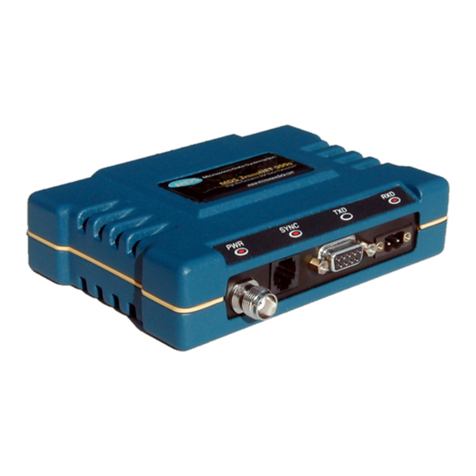
MDS 05-2873A01, Rev. A MDS
i
NET 900 Installation Guide
3
Serviceability of this Manual
Every reasonable effort has been made to ensure the accuracy of this manual, however
product improvements may result in minor differences between the manual and the
product shipped to you. If you have additional questions or need an exact specification
for a product, please contact our Customer Service Team using the information at the
back of this guide. Microwave Data Systems Incorporated reserves its right to correct
any errors or omissions. Updated information may also be available on our Web site
atwww.microwavedata.com. Thismanualis fortheuse ofprofessionalsto guidethem
in the installation, operation and basic system maintenance of the equipment covered.
OPERATIONAL & SAFETY NOTICES
The radio equipment described in this guide emits
radio frequency energy. Although the power level
is low, the concentrated energy from a directional
antenna may pose a health hazard. Do not allow
people to come closer than two meters (6 feet) to
a fixed antenna when the transmitter is operating.
FM/UL/CSA Notice
This product is available for use in Class 1, Division 2, Groups A, B, C & D Haz-
ardous Locations. Such locations are defined in Article 500 of the National Fire Pro-
tection Association (NFPA) publication NFPA 70, otherwise known as the National
Electrical Code.
The MDS
i
NET 900 has been recognized for use in these hazardous locations by three
independent agencies —Underwriters Laboratories (UL), Factory Mutual Research
Corporation (FMRC) and the Canadian Standards Association (CSA). The UL certi-
fication for the transceiver is as a Recognized Component for use in these hazardous
locations, in accordance with UL Standard 1604. The FMRC Approval is in accor-
dance with FMRC Standard 3611. The CSA Certification is in accordance with CSA
STD C22.2 No. 213-M1987.
FM/UL/CSA Conditions of Approval
The MDS
i
NET 900 is not acceptable as a stand-alone unit for use in the hazardous
locations described above. It must either be mounted within another piece of equip-
ment, which is certified for hazardous locations, or installed within guidelines, or con-
ditions of approval, as set forth by the approving agencies. These conditions of
approval are as follows:
1. The MDS
i
NET 900 unit must be mounted within a separate enclosure that is
suitable for the intended application.
2. The antenna feedline, DC power cable and interface cable must be routed
through conduit in accordance with the National Electrical Code.
3. Installation, operation and maintenance of the MDS
i
NET 900 unit should be in
accordance with the transceiver's installation manual, and the National Electrical
Code.
4. Tampering or replacement with non-factory components may adversely affect the
safe use of the MDS
i
NET 900 unit in hazardous locations, and may void the
approval.
RF Exposure
